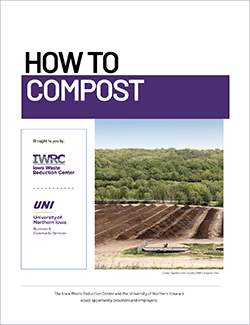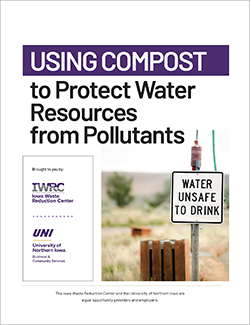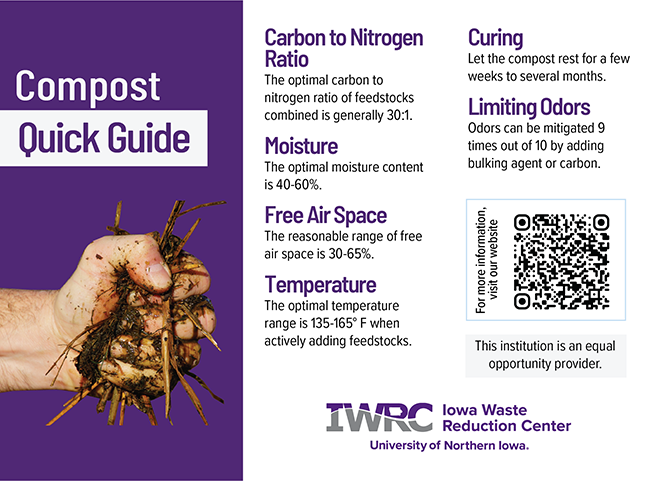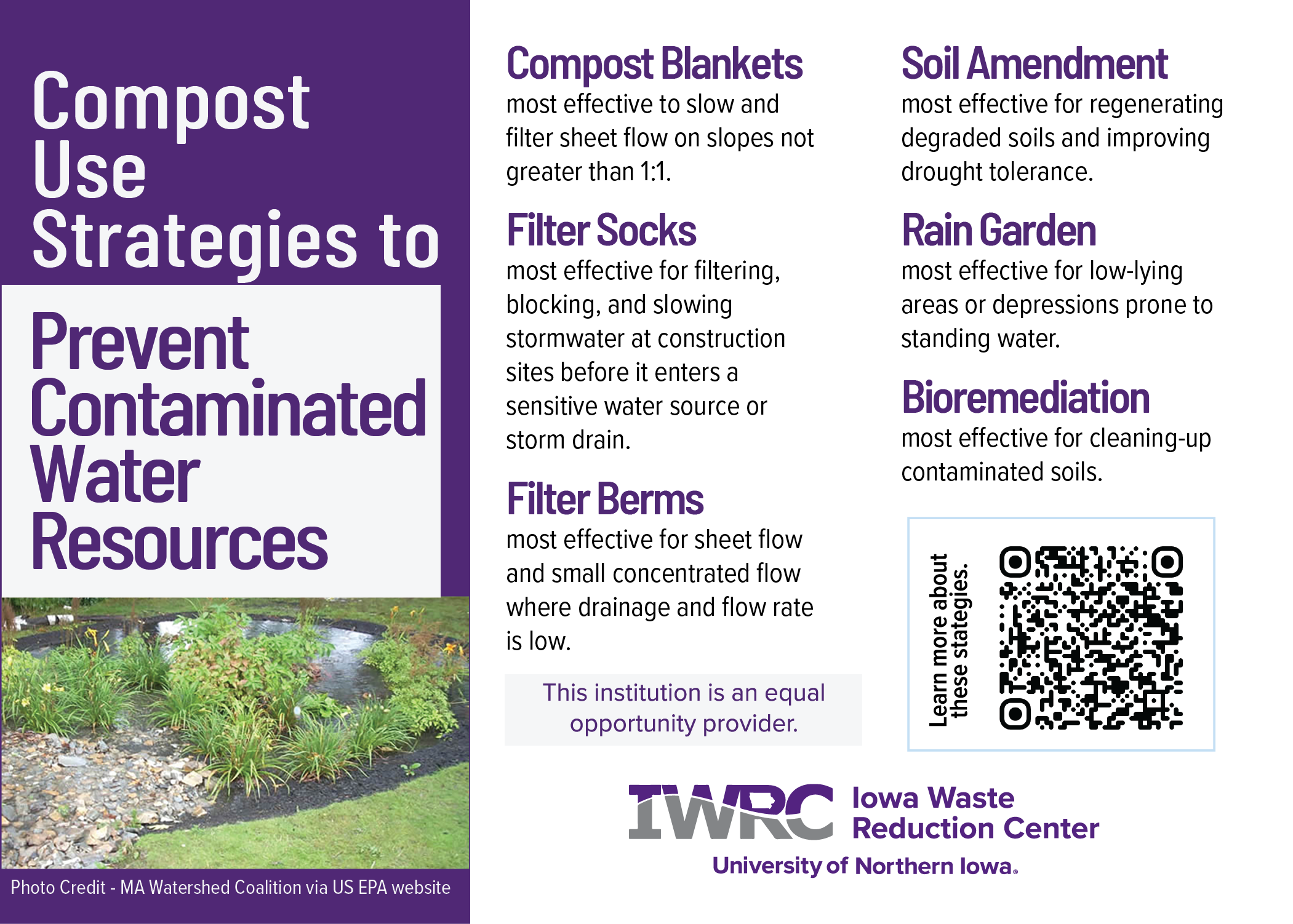Rural Compost Operations and Compost Use Training Project
Resources
How to Compost
How to Use Compost
Click here for Spanish versions of our training guides
Magnets
Download and print copies of our original 5x7 magnets
A quick guide to help you get started.
An overview of proven strategies you can implement using compost to prevent water source contamination.
Bookmarks
Download and print copies of our original 2x7 bookmark (2 sided)
The Rural Compost Operations and Compost Use Training Project project is in full swing through summer 2025!
The Iowa Waste Reduction Center will be traveling throughout the Upper Midwest to provide on-site training and technical assistance in seven rural communities to teach attendees:
- How to compost food waste including best management practices, and
- How to use the finished product, compost, to protect water sources including rivers, lakes, and groundwater from pollutants and contaminants.
Training events will teach attendees the best practices to keep a compost operation healthy and active including classroom lectures and hands-on field exercises. Then the training event will delve into strategies that are proven to protect local water sources from pollutants found in stormwater including:
- Compost blankets
- Filter socks
- Filter berms
- Incorporating compost into soils
- Bioremediation
- Rain gardens
Training Workshops
JULY
Robey Memorial Public Library
401 1st Ave NW, Waukon, IA
Monday, July 7
1-4pm
Platteville Public Library
225 W Main St, Platteville, WI
Thursday, July 10
2-5pm
AUGUST
Carnegie-Schadde Memorial Public Library
230 4th Ave, Baraboo, WI
Friday, August 8
2-5pm
Postville Public Library
Spanish translator available
235 W Tilden St., Postville, IA
Friday, August 15
3-6pm
Spring Grove Public Library
172 W Main St., Spring Grove, MN
Monday, August 18
5-8pm
Wells Public Library
54 1st St SW, Wells, MN
Tuesday, August 19
5-8pm
Mount Carroll Public Library
208 N Main St., Mt. Carroll, IL
Friday, August 22
1-4pm
This material is based upon work supported under a grant by the Rural Utilities Service, United States Department of Agriculture. Any opinions, findings, and conclusions or recommendations expressed in this material are solely the responsibility of the authors and do not necessarily represent the official views of the Rural Utilities Service.
Rural Community Assistance Partnership, Inc., Iowa Waste Reduction Center, and University of Northern Iowa are equal opportunity providers and employers.







